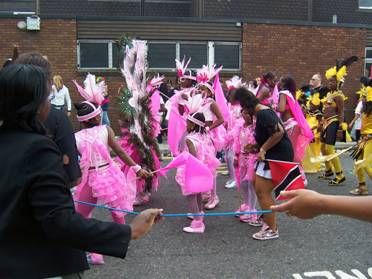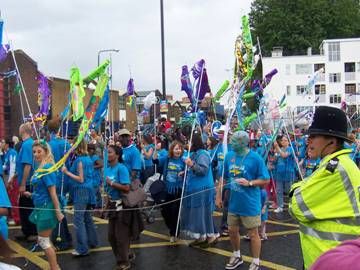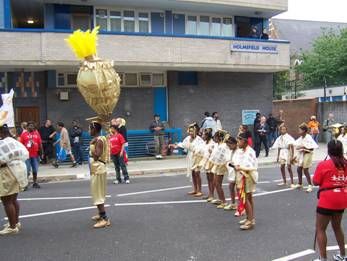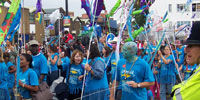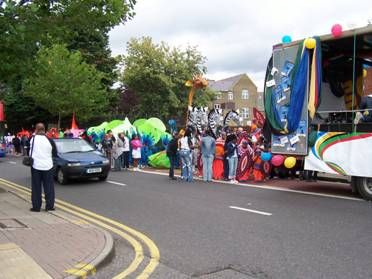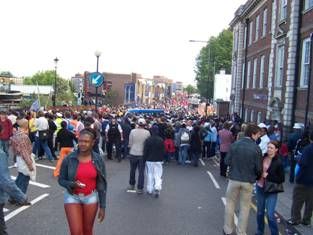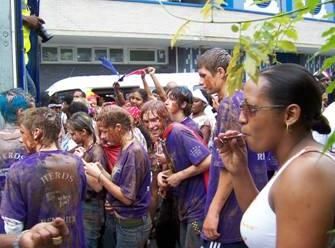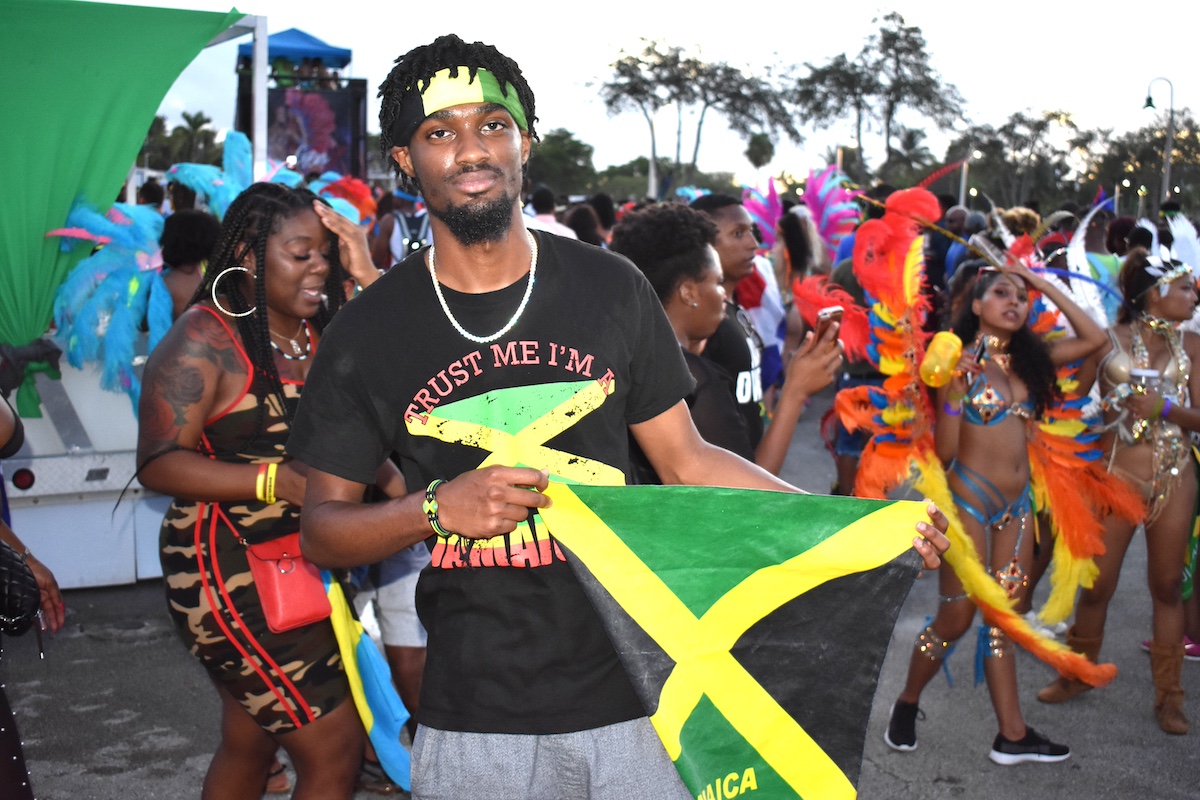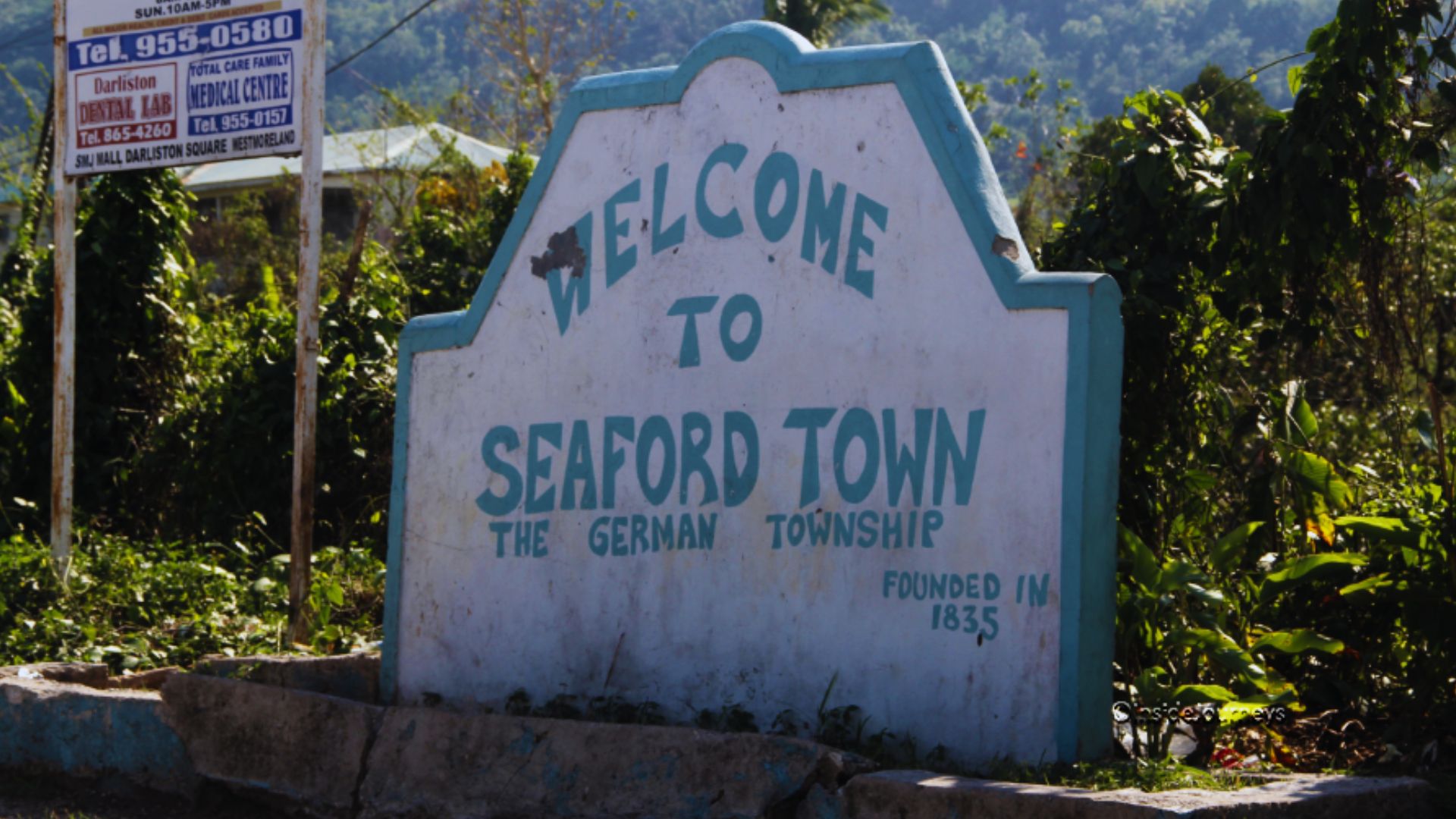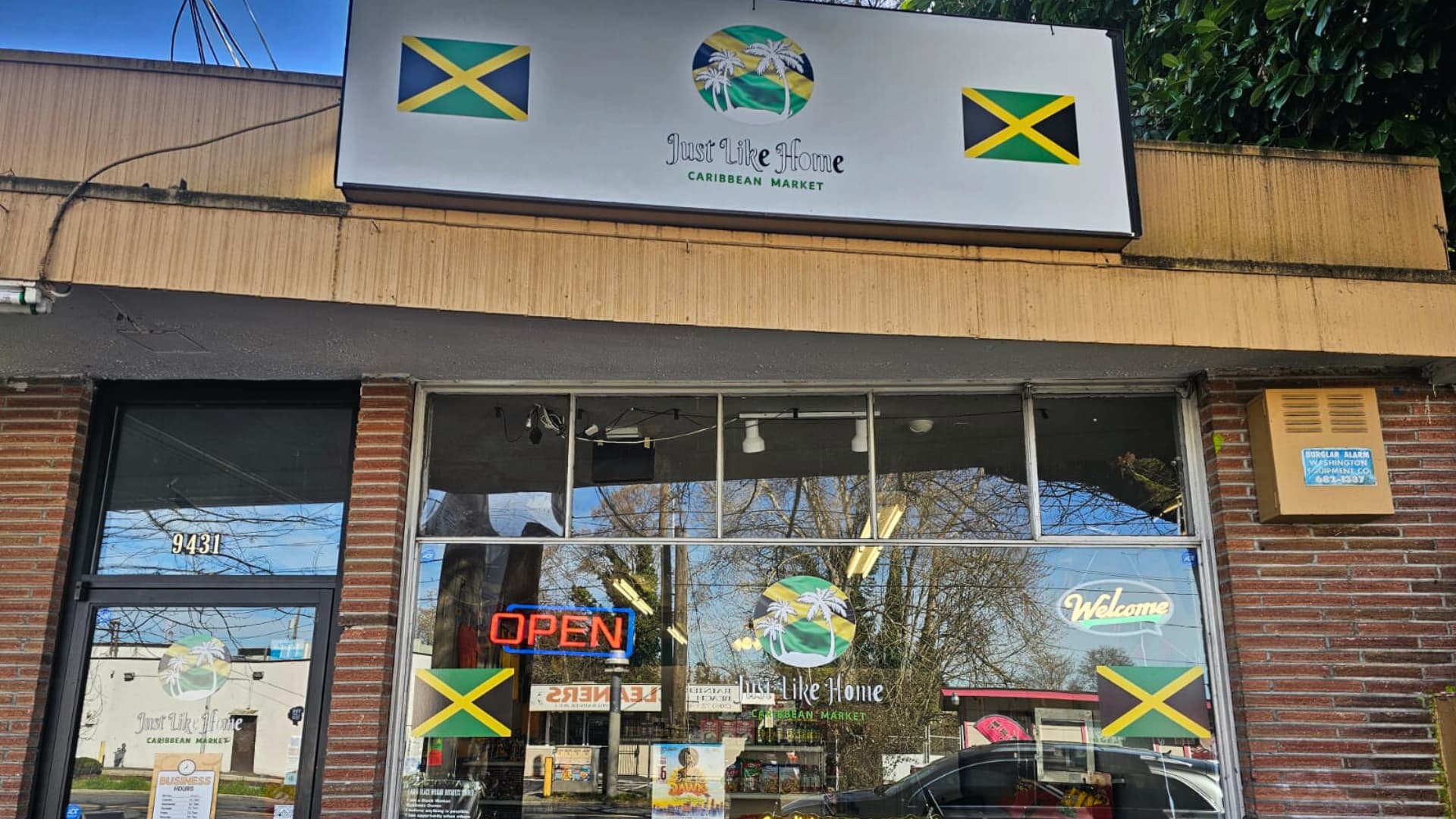A little of our British History – Windrush brought with it racism, discrimination and lack of acceptance, but in 1964, black music was given freedom of expression in the form of the steel band which started playing on the streets of England because of the inspiration of Rhaune Laslett. Steel Bands were only a small part of Black Music, so black people took this opportunity to share with the masses the diversity and complexity of black riddim. The ‘permission’ to play street music via sound systems and steel bands meant the beginning of creative expression for Caribbeans. The Carnival became the nemesis of racial tension that had culminated from the Notting Hill Race Riots of 1958.
This year was Notting Hill Carnival’s 40th anniversary. The carnival grew out of shoobeen type dances in community halls, and got bigger and bigger until it is now renowned as being Europe’s biggest street party.
The Notting Hill Carnival is a major and compelling event, not only for blacks, but all races and cultures and was attended by over 500,000 in 1976; and quadrupled just one year later in 1977, to 2 million. White people, in particular, were curious about the music, the style, the costumes, the food and the loud music, and wanted to participate in the black man’s licence to dance on the streets, listen to loud sound systems (which under normal circumstances would breach the peaceful enjoyment law) and amass without fear. It became ‘legal’ on the two days over the August Bank Holiday weekend (it used to be three) to drink alcohol, and feel totally liberated within the confines of the law.
However, the more people that attended, the more crowd control systems were put in place which meant more barricades, more police and more ambulances. Routes which had enjoyed free access a few years ago were now barricaded with metal gates. Walking is now the only way to get to the Carnival, and once you enter the Carnival zone, crowds hold you captive and it is almost impossible to make progress.
People walk a minimum of 3-5 miles to the Carnival because parking is so difficult and if you are lucky to find a parking space you will wish you hadn’t because it will take you over 3 hours to leave the area because of the density of the traffic! Train stations permit exit only; road blockages designed to restrict, ironically opposing the theme of the Carnival of “Freedom & Justice”. Black people had been praying for weeks for a sunny day — not that it made a difference to them attending the Carnival, but it could deter them from wearing their skimpiest and expensive outfits bought specially for the occasion. Yet none of the obstacles deter revellers from attending the cultural event because it is the only place in England, where people are allowed to express their unique identity.
Although the theme for the Carnival was Freedom & Justice, the theme for Yaa Assantewaa’s costumes for 2004 was ‘Blow Ya Horn’. Quite pertinently, the horn has been blowing for the past few weeks announcing the imminence of the carnival; informing of the best routes and where the sound systems are located. The costumes for the carnival take the costume designers a whole year to make them as eye-catching as possible.
Walking towards the Carnival, I picked up the vibe miles before I was anywhere near Notting Hill. I felt a rumbling in my soul – it was the base of the sound system. The colours, the hair dos – even the driving vibe on the motorway resonated within me. It seemed as though every car heading in a southerly direction was heading towards the neighbouring towns of Harlesden, Willesden Junction, Queens Park, Ladbroke Grove and Kensington to get a park. On these two days, nearly every black person walking is going to the Carnival!
Harrow Road (at the junction of Ladbroke Grove Road) was the route to the Carnival, so I parked my car in Harlesden, which is where the procession commenced.
I walked the length of Harrow Road to the Carnival in just under an hour. As I neared the Ladbroke Grove, police stood beside their motorbikes at corners. They didn’t look uncomfortable, some had been smeared with chocolate and it was one of those few occasions when I could be bold and say: “Hello Offi-sah!” As it was early in the day, they felt relatively safe. I noticed an elderly policeman stare at my T-shirt. At first I thought he was admiring it, and then realised that “The Other Side of Tourism”, could be mistaken for “The Other Side of Terrorism” , where vowels were intermingled within the folds of the T-shirt. He wasn’t smiling! When I expanded the T-shirt, he still didn’t smile.
During the day, I witnessed reciprocation and participation from the police force, but as soon as dusk arrived, I sensed nervousness and agitation. One minute, the police force was fragmented, the next minute they had encircled the Carnival holding those who had not left early, captive. Large police vans were on the perimeter while ambulances were on standby ‘just in case’. I saw a police car racing towards the Carnival area, siren blaring. It was time for me to retreat.
The Carnival vibe and the sense of freedom disappeared; intensity and fear of the unknown stepped in its place. As the sky darkened, the word “Yardy” became prevalent. It is as though the ‘Yardies’ weren’t around during the day! In the shadow, screams which were translated as excitement hours earlier, were now associated with someone getting killed or hurt. The ‘sensible’ tek time and back weh, knowing that a long walk is ahead of them – tired having walked for miles during the day. The Carnival ends, and if there is no trouble it will re-commence the following year.
I have one criticism! On Sunday, some of the adult costumes were made from a cheap DIY overall fabric, which the participators had covered with melted chocolate and poured over themselves or T-shirts given impact through coordination of colour only, not design!! The floats equipped with steel pans were devoid of musicians to play them; white people were now dressed up in Carnival attire and had their own floats!! I questioned the authenticity of the Carnival for a while.
The Carnival emanated from the Caribbean so I would have thought that being Caribbean, or of Caribbean descent was a criterion, but in a multicultural society, one’s descent is vague!
Let’s hope that the legacy of our ancestors will be carried on by our young, who seemed somewhat tired this year, and didn’t seem to have enthusiasm for soca music.
The ‘wining’ of years past was either short-lived or replaced by a slow walk, intermingled with mothers pushing their baby buggies throughout the parade.
It has been said that I am too critical – I prefer to say that I have standards. People come from far and wide to see the carnival for whatever reason, and when the total cost of the carnival this year was £93 million (including the salary of 10,000 police) to ensure the carnival is safe and a success, carnival organizers have a responsibility to ensure that the enthusiasm and commitment of our civil rights activist Claudia Jones who died in 1964 and Rhaune Laslett, a social worker whose vision to bring steel bands into the streets, is maintained to a high standard, because it is for them the Carnival bell tolls. I must admit, however, that the dullness of Sunday was more than compensated for, on Monday, when the vast array of colours and beautiful floats sailed passed and the crowds with them
The carnival is not just about competing sound systems, selling food and wares; it is about our legacy towards freedom in Great Britain. The youths of today need to understand that and blow their horn in celebration. Our youths need to be informed of the Carnival’s history in a user friendly way so that they will feel a part of the parade and will carry it into future generations.
Give the sound systems their due, especially Rampage (the urban sound system) who always has a positive message to keep the young crowds under control, there was no trouble. The Carnival would be nothing without the vibrant music, so I do hope they re-energise some of the costumes. We have been given the opportunity to reign as Kings and Queens for two days only and should adorn ourselves in like manner.
That being said, everyone has their niche and an element of the Carnival which is important to them. There is something for everyone, which is the reason so many people attend and why it is now such a strong part of our Carib-British culture. Let’s exploit that reason and celebrate our freedom and justice in that spirit next year! Let next year’s theme be “Kings & Queens”.
